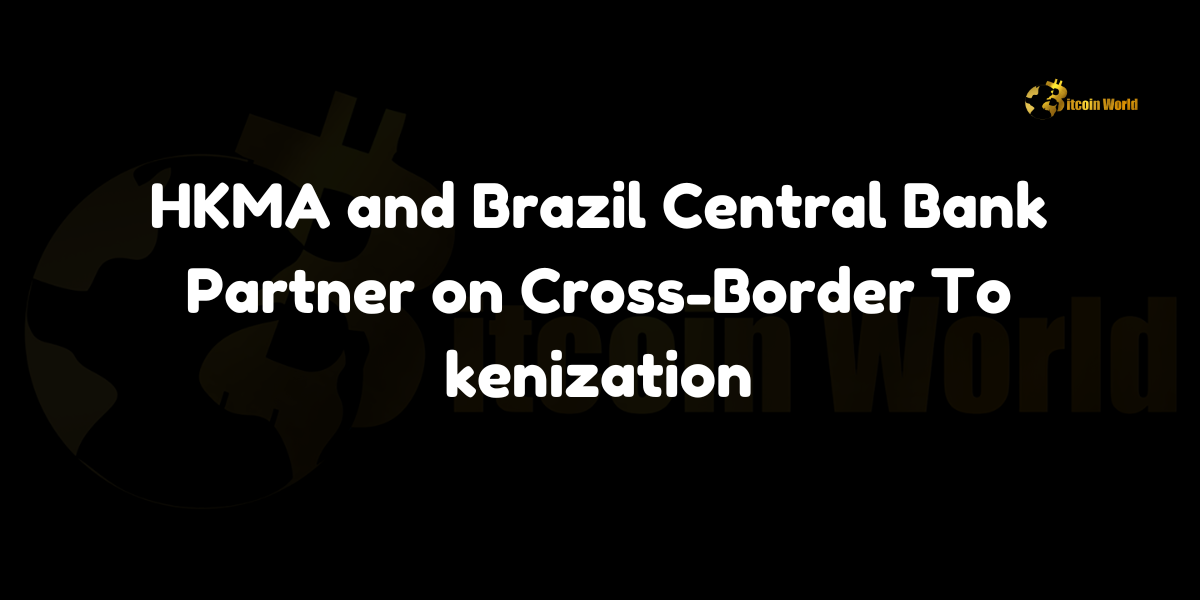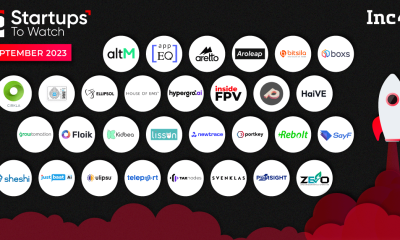Crptocurrency
HKMA and Brazil Central Bank Partner on Cross-Border Tokenization

[ad_1]
In a landmark collaboration, the Hong Kong Monetary Authority (HKMA) and Brazil’s Central Bank (BCB) have joined forces to explore cross-border tokenization. Utilizing HKMA’s Project Ensemble and Brazil’s Drex digital currency pilot, this partnership aims to develop efficient settlement models for trade finance and carbon credits, ultimately streamlining cross-border payments. This initiative, reported by CryptoSlate, signifies a significant step towards integrating blockchain technology into international financial systems.
Introduction to the Partnership
Who Are the Partners?
Hong Kong Monetary Authority (HKMA) is Hong Kong’s de facto central bank, responsible for maintaining monetary and financial stability. Brazil’s Central Bank (BCB) serves as the primary regulatory authority overseeing Brazil’s financial system. Both institutions are at the forefront of adopting innovative financial technologies to enhance their respective economies.
Overview of the Collaboration
The partnership focuses on leveraging blockchain technology to tokenize cross-border transactions. By integrating HKMA’s Project Ensemble—a blockchain-based initiative aimed at enhancing the efficiency and transparency of financial transactions—with Brazil’s Drex digital currency pilot, the collaboration seeks to create robust solutions for trade finance and carbon credit management.
Details of the Cross-Border Tokenization Initiative
Project Ensemble by HKMA
Project Ensemble is HKMA’s flagship blockchain initiative designed to modernize financial transactions within Hong Kong and across borders. It aims to reduce transaction times, lower costs, and increase transparency by utilizing distributed ledger technology (DLT).
Drex Digital Currency Pilot by BCB
Drex is Brazil’s experimental digital currency pilot program initiated by the Brazilian Central Bank. The project explores the use of digital currencies to enhance payment systems, promote financial inclusion, and streamline international trade processes.
Objectives of the Partnership
The primary objectives of the HKMA and BCB partnership include:
- Efficient Settlement Models: Developing blockchain-based settlement systems to facilitate quicker and more secure cross-border payments.
- Trade Finance Optimization: Streamlining trade finance operations by tokenizing trade documents and transactions, reducing reliance on traditional intermediaries.
- Carbon Credit Management: Creating transparent and verifiable systems for managing and trading carbon credits, supporting global sustainability efforts.
- Financial Inclusion: Enhancing access to financial services for businesses and individuals engaged in international trade.
Benefits of Cross-Border Tokenization
Enhanced Efficiency
Tokenization of cross-border transactions significantly reduces the time required for settlements, often cutting down processing times from days to mere minutes. This efficiency benefits businesses by accelerating cash flows and reducing operational delays.
Cost Reduction
By minimizing the need for intermediaries such as correspondent banks, blockchain-based tokenization lowers transaction fees and overall costs associated with cross-border payments. This cost-effectiveness makes international trade more accessible, especially for small and medium-sized enterprises (SMEs).
Increased Transparency and Security
Blockchain’s immutable ledger ensures that all transactions are transparent and verifiable, reducing the risk of fraud and enhancing trust between trading partners. Enhanced security measures protect sensitive financial data from unauthorized access and cyber threats.
Improved Sustainability
The integration of carbon credit management through blockchain supports environmental sustainability initiatives by providing a reliable and transparent system for tracking and trading carbon credits. This facilitates compliance with global climate goals and encourages responsible business practices.
Implications for the Global Financial Ecosystem
Strengthening International Trade
The collaboration between HKMA and BCB is poised to revolutionize international trade by providing more reliable, efficient, and secure financial transactions. This advancement can lead to increased global trade volumes and stronger economic ties between Hong Kong, Brazil, and other participating nations.
Promoting Blockchain Adoption
This partnership serves as a model for other central banks and financial authorities to explore blockchain technology’s potential in enhancing financial systems. The success of this initiative could accelerate the widespread adoption of blockchain across various sectors of the global economy.
Advancing Regulatory Frameworks
By working together on innovative financial solutions, HKMA and BCB can develop and refine regulatory frameworks that accommodate the unique aspects of blockchain technology. This collaboration ensures that new technologies are integrated in a compliant and secure manner, setting standards for future blockchain initiatives.
Expert Opinions
Dr. Emily Carter, Blockchain Analyst
“The partnership between HKMA and BCB represents a significant milestone in the integration of blockchain technology into traditional financial systems. By focusing on trade finance and carbon credit management, this collaboration not only enhances efficiency and transparency but also supports global sustainability efforts.”
Mark Thompson, Financial Strategist
“Cross-border tokenization has the potential to transform international trade by making transactions faster, cheaper, and more secure. The collaboration between HKMA and BCB is a forward-thinking move that could set the standard for how central banks leverage blockchain technology to enhance global financial operations.”
Sarah Lee, Cryptocurrency Researcher
“This initiative by HKMA and BCB showcases the practical applications of blockchain technology in solving real-world financial challenges. By addressing efficiency, cost, and transparency, they are paving the way for broader adoption of decentralized financial solutions in international trade and beyond.”
Future Outlook
Expansion to Other Financial Sectors
Following the successful implementation of cross-border tokenization in trade finance and carbon credit management, HKMA and BCB may explore expanding blockchain applications to other financial sectors such as remittances, supply chain finance, and asset management.
Collaborative Innovation
The partnership is likely to foster further collaborative innovation between Hong Kong and Brazil, encouraging the exchange of knowledge, technology, and best practices in blockchain development. This synergy can lead to the creation of more advanced and scalable financial solutions.
Increased Global Participation
As the project gains momentum, other countries and financial institutions may join the initiative, creating a more interconnected and interoperable global financial ecosystem. This increased participation will enhance the effectiveness and reach of blockchain-based solutions in international finance.
Regulatory Advancements
The success of this partnership will likely influence regulatory bodies worldwide to develop clearer and more supportive frameworks for blockchain technology. This will facilitate the growth and adoption of digital assets and decentralized finance on a global scale.
Conclusion
The strategic partnership between the Hong Kong Monetary Authority (HKMA) and Brazil’s Central Bank (BCB) to explore cross-border tokenization marks a significant advancement in the integration of blockchain technology within the global financial system. By leveraging HKMA’s Project Ensemble and Brazil’s Drex digital currency pilot, this collaboration aims to enhance the efficiency, security, and transparency of international trade finance and carbon credit transactions.
This initiative not only benefits the participating nations but also sets a precedent for other central banks and financial institutions to adopt innovative blockchain solutions. As cross-border tokenization becomes more widespread, it is poised to transform the landscape of international finance, driving greater economic integration and fostering a more inclusive and sustainable global economy.
To stay updated on the latest developments in blockchain collaborations and financial innovations, explore our article on latest news, where we cover significant events and their impact on the digital asset ecosystem.
Disclaimer: The information provided is not trading advice, Bitcoinworld.co.in holds no liability for any investments made based on the information provided on this page. We strongly recommend independent research and/or consultation with a qualified professional before making any investment decisions.
[ad_2]
Source link
Crptocurrency
Binance Lists ChainGPT (CGPT): Unlocking a New Era for AI-Powered Blockchain Solutions

[ad_1]
[ad_2]
Source link
Crptocurrency
$88K Critical for Bitcoin Momentum

[ad_1]
Bitcoin’s price trajectory is at a pivotal juncture, with $88,000 emerging as a key level for sustaining market momentum, according to on-chain analytics firm Glassnode. Using the UTXO Realized Price Distribution (URPD) metric, Glassnode emphasized the significance of the Short-Term Holder (STH) cost basis, noting minimal trading volume below this threshold.
The $88,000 level serves as a critical psychological and technical support, and a decisive loss could pave the way for further downside. This article explores the importance of this metric and what it could mean for Bitcoin’s future price movement.
Understanding Bitcoin’s STH Cost Basis
The Short-Term Holder (STH) cost basis represents the average price at which recently acquired Bitcoin has been purchased. This metric is essential for analyzing:
- Price Momentum: Indicates the health of recent buyer confidence.
- Support Levels: Highlights crucial price points where short-term investors are likely to defend positions.
At $88,000, the STH cost basis underscores its significance as a level where short-term traders might capitulate if breached, potentially triggering a larger sell-off.
The Role of the URPD Metric
Glassnode’s UTXO Realized Price Distribution (URPD) metric maps the distribution of Bitcoin trading volumes across different price levels. Key insights from the current analysis include:
1. Minimal Volume Below $88K
- Glassnode’s data reveals limited trading activity beneath $88,000, suggesting weak historical support in this range.
2. Vulnerability to Downside Pressure
- A breakdown below $88,000 could lead to accelerated selling, as short-term holders exit positions to minimize losses.
Why $88K Is Critical for Bitcoin
1. Psychological Benchmark
- Round numbers like $88,000 hold psychological significance for traders, influencing decision-making and market sentiment.
2. Technical Relevance
- The STH cost basis aligns closely with support and resistance levels derived from historical price action, making it a reliable marker.
3. Momentum Indicator
- Holding above $88,000 would demonstrate resilience, while a breach could signal a shift in momentum toward bearish conditions.
Potential Scenarios Based on $88K Level
1. Holding Above $88K
- Sustaining this level could reaffirm Bitcoin’s bullish momentum, encouraging accumulation by both short-term and long-term holders.
- Positive macroeconomic news or institutional support could bolster price stability.
2. Breaching $88K
- A decisive loss of $88,000 might lead to panic selling, increasing volatility and pushing Bitcoin toward lower support levels.
- Traders may target $85,000 or lower as the next critical support zone.
Market Sentiment and Influences
1. Institutional Activity
- Institutional investors closely monitor key levels like $88,000, adjusting strategies based on market strength or weakness.
2. Broader Economic Factors
- Macroeconomic elements, including interest rate policies and inflation data, continue to impact risk assets like Bitcoin.
3. Short-Term Trader Behavior
- As the primary holders at this cost basis, short-term traders play a pivotal role in determining Bitcoin’s near-term price movements.
How Traders Can Respond
1. Monitor Key Levels
- Keep a close watch on Bitcoin’s behavior around $88,000, as this level is crucial for gauging momentum.
2. Set Stop Losses and Alerts
- Traders should establish clear stop-loss levels to minimize risk in case of a breakdown.
3. Consider Accumulation Opportunities
- If Bitcoin holds above $88,000, it could present a buying opportunity for those confident in a bullish continuation.
FAQs
1. Why is $88,000 significant for Bitcoin?
The $88,000 level represents the Short-Term Holder (STH) cost basis, a critical indicator of price momentum and market confidence.
2. What happens if Bitcoin drops below $88,000?
A loss of this level could trigger selling pressure, as short-term holders exit positions, potentially leading to further downside.
3. What is the URPD metric?
The UTXO Realized Price Distribution (URPD) metric tracks Bitcoin’s trading volume at different price levels, highlighting key areas of support and resistance.
4. How does $88K influence market sentiment?
Maintaining this level reinforces confidence in the market’s bullish momentum, while losing it could shift sentiment toward bearish expectations.
5. What should traders do at this level?
Traders should monitor Bitcoin’s performance around $88,000, set stop-loss levels, and consider accumulation if the level holds.
Conclusion
The $88,000 level is more than just a price point; it’s a pivotal marker for Bitcoin’s momentum and market sentiment. Glassnode’s analysis underscores its significance as the Short-Term Holder cost basis, with the potential to dictate Bitcoin’s next move.
Whether Bitcoin sustains this critical level or breaches it will determine its trajectory in the coming weeks. For traders and investors, staying vigilant and adapting strategies to this key metric will be essential in navigating Bitcoin’s dynamic market.
To learn more about the innovative startups shaping the future of the crypto industry, explore our article on latest news, where we delve into the most promising ventures and their potential.
Disclaimer: The information provided is not trading advice, Bitcoinworld.co.in holds no liability for any investments made based on the information provided on this page. We strongly recommend independent research and/or consultation with a qualified professional before making any investment decisions.
[ad_2]
Source link
Crptocurrency
Mantra Partners with UAE Real Estate Giant Damac to Tokenize $1B in Assets

[ad_1]
[ad_2]
Source link
-

 Startup Stories1 year ago
Startup Stories1 year agoWhy Millennials, GenZs Are Riding The Investment Tech Wave In India
-

 Startup Stories1 year ago
Startup Stories1 year agoStartups That Caught Our Eyes In September 2023
-

 Startup Stories1 year ago
Startup Stories1 year agoHow Raaho Is Using Tech To Transform India’s Fragmented Commercial Trucking
-

 Startup Stories1 year ago
Startup Stories1 year agoMeet The 10 Indian Startup Gems In The Indian Jewellery Industry’s Crown
-

 Startup Stories1 year ago
Startup Stories1 year agoWOW Skin Science’s Blueprint For Breaking Through In The $783 Bn BPC Segment
-

 Crptocurrency11 months ago
Crptocurrency11 months agoLither is Making Crypto Safe, Fun, and Profitable for Everyone!
-

 Startup Stories1 year ago
Startup Stories1 year agoHow Volt Money Is Unlocking The Value Of Mutual Funds With Secured Lending
-

 E-commerce1 year ago
E-commerce1 year agoTop Online Couponing Trends To Watch Out For In 2016




